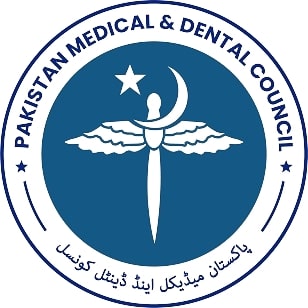EFFICACY OF MODIFIED VERSUS STANDARD VALSALVA MANOEUVRE FOR TREATING SUPRAVENTRICULAR TACHYCARDIA IN AN EMERGENCY DEPARTMENT: A QUASI-EXPERIMENT
DOI:
https://doi.org/10.59058/jaimc.v20i4.74Keywords:
Modified Valsalva Manoeuvre, Standard Valsalva Manoeuvre, Supraventricular TachycardiaAbstract
Objective: To assess efficacy of modified Valsalva manoeuvre in comparison to standard Valsalva manoeuvre in treating Supraventricular tachycardia in an emergency department.
Methods: It was a quasi–experiment conducted in Azra Naheed Medical College Lahore including 132 patients presented with supraventricular tachycardia (SVT) in an emergency department. Patients were equally divided and randomly assigned to receive standard Valsalva manoeuvre and modified Valsalva manoeuvre. ECG was recorded before and after the Manoeuvre. Subjects reverted back to sinus rhythm within one minute of allocated manoeuvre were considered successful. SPSS version 21 was used to manage and analyze data.
Results: Mean age of participants was 40±11 years with 33% male and 66% were females. Mean duration of paroxysmal SVT in participants was 5 ± 4 years. The mean systolic and diastolic blood pressure was 112±15 and 72±10 mmHg respectively. The range of pulse rate per minute was from 136 to 240 with a mean of 184 ± 24. SVT was reverted by Valsalva Manoeuvre in 89 (67.4%) patients and did not revert by these Manoeuvers in 43 (32.6%) patients. Out of 89 reverted, 38 were reverted by performing Standard Valsalva method and 51 were reverted by performing modified Valsalva methods (p=0.025). There was no association between age, sex, duration of SVT, presence of Diabetes Mellitus, Hypertension or Ischemic Heart Disease with the effectiveness of Vagal Manoeuvre for termination to sinus rhythm.
Conclusion: Modified Valsalva manoeuvre is significantly effective than the standard manoeuvre in terminating SVT without increasing adverse effects or time spent in the emergency department.
References
Orejarena LA, Vidaillet H, DeStefano F, Nordstrom DL, Vierkant RA, Smith PN, et al. Paroxysmal supraventricular tachycardia in the general population. J Am Coll Cardiol 1998; 31(1): 150–7.
Murman DH, McDonald AJ, Pelletier AJ, Camargo CA Jr. US emergency department visits for supraventricular tachycardia, 1993–2003. Acad Emerg Med 2007; 14: 578–81.
Losek JD, Endom E, Dietrich A, Stewart G, Zempsky W, Smith K. Adenosine and pediatric supraventricular tachycardia in the emergency department: multicenter study and review. Ann Emerg Med 1999; 33:185e91.
Colucci RA, Silver MJ, Shubrook J. Common types of supraventricular tachycardia: Diagnosis and management. Am Fam Physician 2010; 82:942‑52.
Wheeler JT. Modified Valsalva Maneuver vs. standard Valsalva Maneuver on Emergency Department Patients Presenting with Supraventricular Tachycardia. School of Physician Assistant Studies Paper587; 2016.
Ferguson JD, DiMarco JP. Contemporary management of paroxysmal supraventricular tachycardia. Circulation 2003; 107(8):1096-9.
Mehta D, Ward DE, Wafa S, Camm AJ. Relative efficacy of various physical manoeuvres in the termination of junctional tachycardia. Lancet 1988; 331(8596):1181-5.
Smith G, Morgans A, Boyle M. Use of the Valsalva manoeuvre in the prehospital setting: a review of the literature. Emerg Med J 2009; 26(1):8-10.
Lim SH, Anantharaman V, Teo WS, Goh PP, Tan A. Comparison of treatment of supraventricular tachycardia by Valsalva maneuver and carotid sinus massage. Ann Emerg Med 1998; 31(1):30-5.
Pandya A, Lang E. Valsalva maneuver for termination of supraventricular tachycardia. Ann Emerg Med 2015; 65(1):27-9.
Blomström-Lundqvist C, Scheinman MM, Aliot EM, Alpert JS, Calkins H, Camm AJ, et al. ACC/AHA/ESC guidelines for the management of patients with supraventricular arrhythmias—executive summary: a report of the American College of Cardiology/American Heart Association Task Force on Practice Guidelines and the European Society of Cardiology Committee for Practice Guidelines (Writing Committee to Develop Guidelines for the Management of Patients With Supraventricular Arrhythmias). Circulation 2003; 108(15):1871-909.
Wong LF, Taylor DM, Bailey M. Vagal response varies with Valsalva maneuver technique. A repeated-measures clinical trial in healthy subjects. Ann Emerg Med 2004; 43:477e82.
Taylor DM, Wong LF. Incorrect instruction in the use of the valsalva manoeuvre for paroxysmal supraventricular tachycardia is common. Emerg Med Australas 2004; 16:284–87.
Advanced Life Support Group. Advanced paediatric life support: the practical approach. 4th edn. UK: Blackwell Publishing Group, 2005.
Chance JF, Warner JG, Elsawy T. Augmented valsalva manoeuvre Resuscitation Council (UK). Advanced life support. 5th edn. London: Resuscitation Council (UK), 2006.
Lowenstein SR, Halperin BD, Reiter MJ. Paroxysmal supraventricular tachycardia. J Emerg Med 1996; 14:39e51.
Walker S, Cutting P. Impact of modified valsalva manoeuvre in the termination of paroxysmal SVT. Emerg Med J 2010; 27: 287–91.
Appelboam A, Gagg J, Reuben A. Modified Valsalva manoeuvre to treat recurrent supraventricular tachycardia: description of the technique and its successful use in a patient with a previous near fatal complication of DC cardioversion. BMJ Case Rep 2014.
Innes JA. Review article: adenosine use in the emergency department. Emerg Med Australas 2008; 20(3): 209–15.
Gaspar J. Comparing Valsalva Maneuver with Carotid Sinus Massage in Adults with Supraventricular Tachycardia. BestBets; 2005.
Appelboam A, Reuben A, Mann C, Gagg J, Ewings P, Barton A, et al. Postural modification to the standard Valsalva manoeuvre for emergency treatment of supraventricular tachycardia (REVERT): A randomized controlled trial. Lancet 2015; 386(10005):1747‑53.
Soar J, Bottiger BW, Carli P, Couper K, Deakin CD, Djarv T, et al. European Resuscitation Council guidelines 2021: adult advanced life support. Resuscitation. (2021) 161:115–51.
Ceylan E, Ozpolat C, Onur O, Akoglu H, Denizbasi A. Initial and sustained response effects of 3 vagal maneuvers in supraventricular tachycardia: a randomized, clinical trial. J Emerg Med. (2019) 57:299–305.
Abdulhamid AS, Almehmadi F, Ghaddaf AA, Alomari MS, Zagzoog A, Al-Qubbany A. Modified valsalva versus standard valsalva for cardioversion of supraventricular tachycardia: systematic review and meta-analysis. Int J Arrhythmia. (2021) 22:2.
Smith GD, Dyson K, Taylor D, Morgans A, Cantwell K. Effectiveness of the Valsalva Manoeuvre for reversion of supraventricular tachycardia. Cochrane Database Syst Rev. 2013;(3):CD009502.
Wallentin J, Sjøl A. Vellykket behandling af supraventrikulær takykardi med modificeret Valsalvas manøvre [Successful treatment of supraventricular tachycardia with a modified Valsalva manoeuvre]. Ugeskr Laeger. 2016;178:V12150998.
Un H, Dogan M, Uz O, Isilak Z, Uzun M. Novel vagal maneuver technique for termination of supraventricular tachycardias. Am J Emerg Med. 2016;34:118. e5-7.
Downloads
Published
How to Cite
Issue
Section
License
Copyright (c) 2023 Nasir Iqbal, Sania Tahir, Hassan Abbas Abdullah, Muhammad Ijaz Bhatti, Usman Javed Iqbal, Mariam Tahir Siddiqi

This work is licensed under a Creative Commons Attribution 4.0 International License.
The articles published in this journal come under creative commons licence Attribution 4.0 International (CC BY 4.0) which allows to copy and redistribute the material in any medium or format Adapt — remix, transform, and build upon the material for any purpose, even commercially under following terms.
-
Attribution — You must give appropriate credit, provide a link to the license, and indicate if changes were made. You may do so in any reasonable manner, but not in any way that suggests the licensor endorses you or your use.
- No additional restrictions — You may not apply legal terms or technological measures that legally restrict others from doing anything the license permits.
The editorial board of the Journal strives hard for the authenticity and accuracy of the material published in the Journal. However, findings and statements are views of the authors and do not necessarily represent views of the Editorial Board. Many software like (Google Maps, Google Earth, Biorender (free version)) restricts the free distribution of materials prepared using these softwares. Therefore, authors are strongly advised to check the license/copyright information of the software used to prepare maps/images. In case of publication of copyright material, the correction will be published in one of the subsequent issues of the Journal, and the authors will bear the printing cost.










